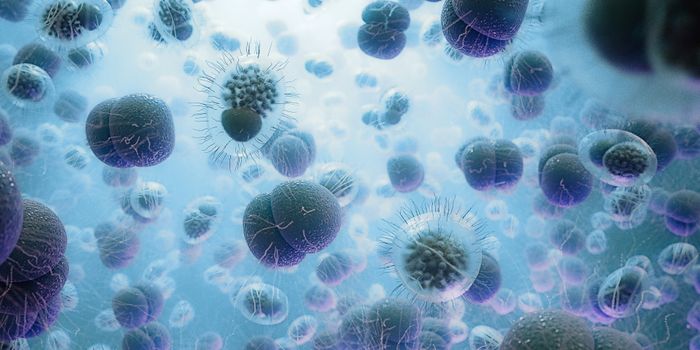Migraine with Aura Linked to Previously Unknown Brain Pathway
Migraines are far worse than a bad headache. As many as 14 percent of the world's adults may suffer from these excruciating episodes. They can involve unbearable throbbing pain, or intense pulsing sensations that may be so bad, people become nauseous and unable to function normally. Migraines can cause people to be extremely sensitive to stimuli like movement, light, noise, or scents. Some patients also experience migraine with aura, in which a set of symptoms arises before the migraine occurs, such as speech, motor, or sensory changes. These attacks can last for days in some individuals. The causes of migraine headaches have been unclear, though genetic and environmental factors have been thought to play a role.
Scientists have now identified a biochemical pathway in which proteins that move in cerebrospinal fluid to sensory cells called trigeminal neurons to cause migraines. These findings, which have been reported in Science, could help researchers develop new treatments for this debilitating problem.
The trigenminal ganglia can be thought of as the gateway to the skull's peripheral sensory nervous system, said first study author Martin Rasmussen, a postdoc at the Center for Translational Neuromedicine at the University of Copenhagen.
There is a barrier at the base of the trigeminal ganglion that can control the movement of substances to the peripheral neurons. Stuff in the cerebrospinal fluid can enter here and trigger sensory neurons that are sensitive to pain and can cause headaches.
"Our results suggest that we have identified the primary channel of communication between the brain and the peripheral sensory nervous system. It is a previously unknown signaling pathway important for the development of migraine headache, and it might be associated with other headache diseases too," said senior study author Professor Maiken Nedergaard.
"Most patients experience one-sided headaches, and this signaling pathway can help explain why. Our study of how proteins from the brain are transported shows that the substances are not carried to the entire intracranial space, but primarily to the sensory system in the same side, which is what causes one-sided headaches," added Rasmussen.
The peripheral nervous system communicates information to and from the organs, skin, and muscles to the spinal cord and brain - the central nervous system.
This study used mouse models as well as an analysis of the trigeminal ganglion in human brains, imaged by MRI. This work has indicated that this signaling pathway is probably the same in mice and humans. In humans, the migraine-causing proteins also move in cerebrospinal fluid.
The investigators also identified proteins in cerebrospinal fluid (CSF) during the aura phase of a migraine. There were changes in the levels of about 11 percent of the 1,425 proteins in CSF during a migraine. A dozen of the proteins whose levels increase can also move to the trigeminal ganglion, bind to a receptor, and trigger the migraine. More work will be needed to understand what leads to the production of these proteins.
One of the proteins identified in this study is called CGRP; it has already been linked to migraines and been used in migraine therapeutics. But other proteins were identified in this work that could open up novel treatment options.
Sources: University of Copenhagen, Science









